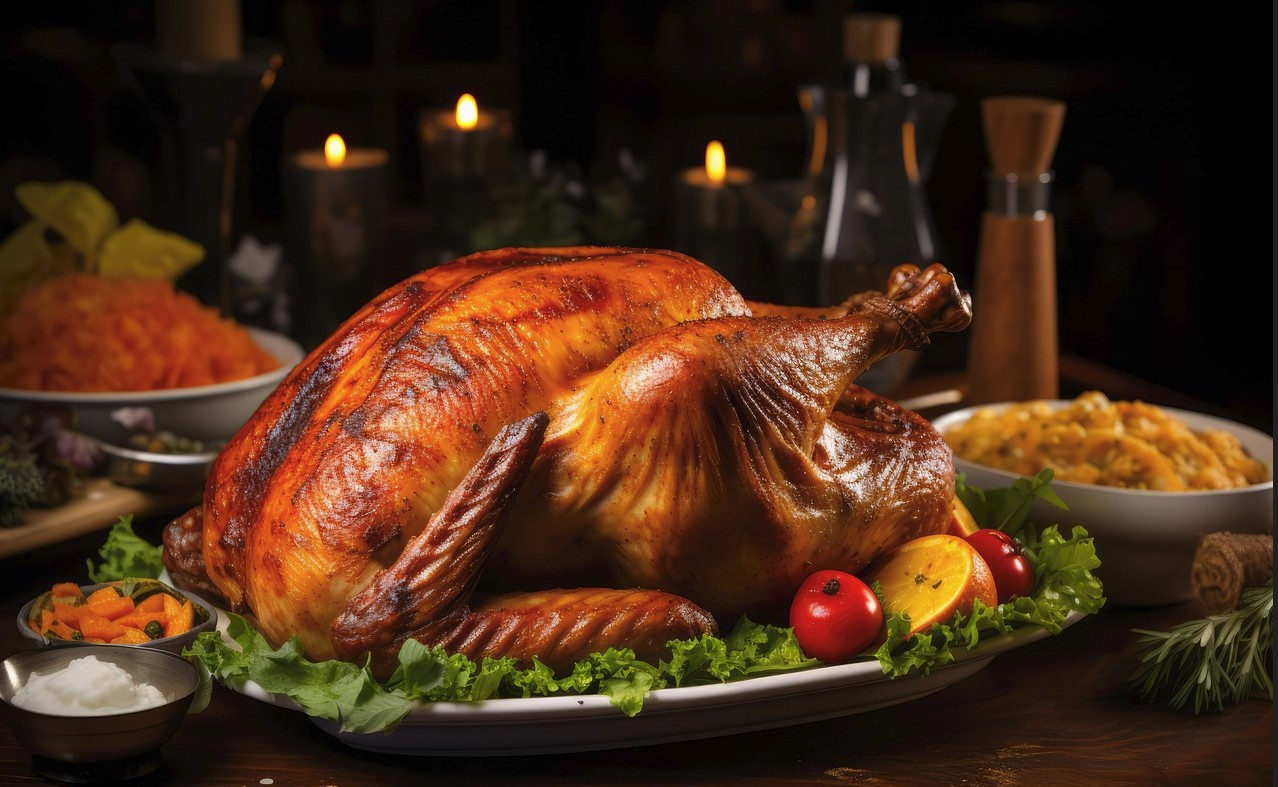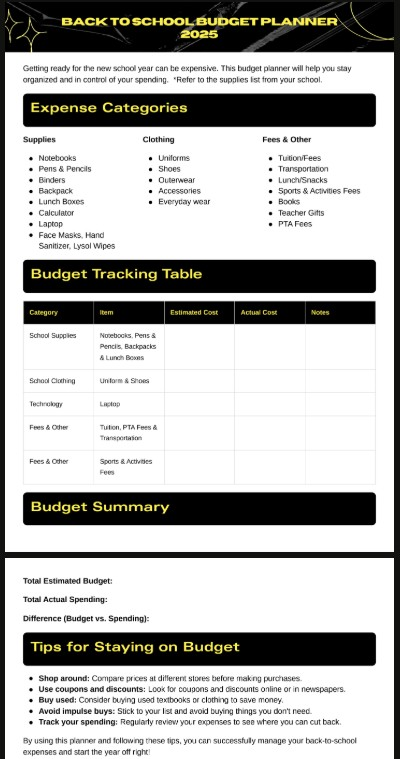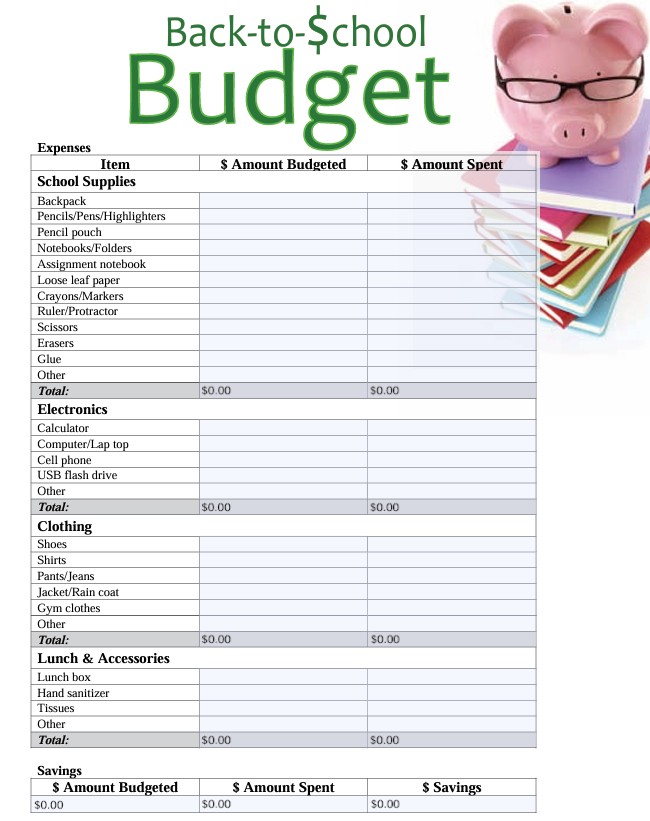Start with the school supply list. Go over each kid’s requirements, then see where you can group purchases or buy in bulk. Every August, the back-to-school rush feels a bit like a pop quiz you forgot to study for: lists, fees, and new clothes pile up, and even seasoned parents get caught off guard. I’ve learned to save more on back to school shopping with a few smart choices early on (like sticking to a firm budget and skipping the fancy extras) turns the rat race into something you can actually handle. This guide brings together practical tips, a few tricks I’ve picked up along the way, and expert advice to help you spend less and stress less—even if your kids all need different colored folders.

Assessing Your Back-to-School Needs
You’ve got the school supply lists on hand, and now it’s time to sort through last year’s leftovers (that spiral notebook with only ten used pages? Still perfectly fine). Kids usually bring home a mixed bag of barely used items, so it makes sense to check those first before you buy anything new.
- Do a “supplies audit” before shopping. Make a list of what you really need.
- Ask teachers for a streamlined supplies list. Sometimes the online versions include “nice-to-have” items as well as essentials.
- Embrace hand-me-downs. Backpacks, clothing, or even sturdy lunchboxes often have another year left in them.
This simple review can trim your shopping list and save both money and time (plus, it sets a great example for kids about using what you have).
Setting a Realistic Back-to-School Budget
Building a budget sounds dull, but it’s your best defense against surprise expenses.
- Determine your spending limit before you shop. Consider the needs list you just made, then add a modest buffer for items you may have forgotten.
- Involve your kids. Give them a set amount and let them help make decisions. This teaches them about money and helps manage expectations.
- Watch out for hidden expenses. It’s not just about pens and paper. Think about shoes, class fees, tech upgrades, and activity costs.
Families may find it helpful to create separate envelopes or categories for each spending area (supplies, clothing, tech, activities), so funds don’t slip through the cracks.

Stretching Your Budget
Smart shopping is about more than chasing the lowest price. It’s about finding real value in every area—whether it’s a sturdy pair of sneakers or the right laptop for homework. There are plenty of creative ways to hang onto your cash.

Back to School Supplies
School supplies swing wildly in price from store to store. Last year, I was shocked at how little we actually spent on basics like glue, pens, and notebooks—especially once we started shopping smarter.
- Buy in bulk and check the back to school sales for staples like pencils, markers, and folders.
- Check dollar stores and discount shops. You can often find name-brand items for less.
- Stick with generic brands for things like paper, composition books, or even crayons. Kids are usually more excited about the color than the label.
Stock up when the prices are low if you have space to store extras for the year.
Finding Affordable Clothes and Shoes
Back-to-school shopping for clothes is a tradition in many families, and for a lot of kids, it’s almost as exciting as the first day itself. While it’s tempting to go all-in, you don’t need to drop hundreds on a whole new wardrobe.
- Shop thrift stores and consignment shops. The deals can be astonishing, especially on jeans, jackets, and name-brand shoes.
- Look online at Facebook Marketplace, Poshmark, or Mercari for gently used or even new items at major discounts.
- Try cashback sites like Rakuten or BeFrugal when buying new clothes online.
- Ask around for hand-me-downs. Many families are happy to pass along outgrown outfits.
- Buy off-season. Get winter coats in spring and shorts in fall for the best prices.
Getting a few “fresh” pieces for the first week satisfies the need for something new without eating up your whole clothing budget.

Budget-Friendly Tech and Electronics
Technology can be the single priciest item on your school list, especially if your child’s grade requires a specific device.
- Look for refurbished or gently used laptops and tablets. Many manufacturers and certified sellers offer warranties.
- Check with your school or library. Some lend out devices or offer discounts for students.
- Search for student discounts on software and accessories (big chains often have seasonal deals).
- If you homeschool, explore free or low-cost online resources for everything from word processing to science experiments.
Quality still matters, but there’s no reason to pay top dollar for the latest model if last year’s technology covers your needs.
Cutting Costs on Sports and Activities
Sports fees, music lessons, and after-school clubs can quietly drain a budget. Fall brings sign-ups for everything from soccer to science club, and if you have several kids, those checks add up fast.
- Ask about reduced or sliding-scale fees. Many schools or leagues offer them, but you often have to ask.
- Limit activities per child each season. Try one activity in the fall, then switch it up in the spring.
- Look into community programs. City rec leagues cost less than private sports clubs.
Encourage kids to pick favorite activities and let them know upfront that your family budget needs to cover everyone fairly.
Back to School Haircuts and Personal Care
A fresh haircut often marks a new school year. While salons can be pricey, there are options.
- DIY at home. YouTube is a goldmine of tutorials, and basic trims aren’t as hard as you think.
- Check for student or discount haircut days at salons or barber colleges.
- Set aside money for personal care. Nail polish, deodorant, and basic hair products can feel like essential confidence boosters, especially for tweens and teens.
Spending a little here can make a big difference in how your child feels stepping back into the classroom.

Teacher Appreciation Gifts for Back to School
Teachers put in long hours getting ready for the school year. They’re often buying supplies themselves, especially for classrooms that need a little extra. Teachers don’t expect gifts, but a small token goes a long way.
- Set a little aside for a thank you card or homemade treat.
- Get creative. Kids love creating handmade crafts or thank you notes.
- Pool resources with other parents for a class gift.
This is a gentle way to start the year on a positive note, without spending much.
Back to School PTA, Sports, and Activity Fees
Even public schools come with a stack of paperwork and fees. These can sneak up—art supplies, field trips, yearbooks, club dues, and fundraisers.
- List activities before school starts and set limits as needed.
- If possible, spread fees across the semester, or see if there are payment plans.
- Volunteer time instead of money, if that’s helpful (many organizations welcome help with events or meetings).
Being upfront with your kids about what can fit in the budget helps avoid disappointment later.

Face Masks, Hand Sanitizer, and Lysol Wipes for Back to School
Health supplies have become part of the “must-have” list. And as cold and flu season approaches, many families want to make sure they’re stocked with essentials.
- Check school guidelines first to see what’s required.
- Buy sanitizer and wipes in bulk when possible; it saves money over buying small packets.
- Consider reusable face masks for daily use.
Don’t skip this important category, as prices on these items fluctuate throughout the year.
Back to School Backpacks and Lunchboxes
Backpacks and lunchboxes see serious wear and tear—but they often last longer than expected. Before you rush out to buy new ones, take a closer look.
- Inspect last year’s gear. Zippers working? No major stains? If so, you can postpone buying new ones.
- Clean and personalize with patches or keychains for a fresh look.
- Shop sales only if you truly need a replacement.
This is a quick and simple way to cut an unnecessary purchase from your list.

Back-to-school costs don’t need to break the bank or dim the excitement of a new year. By knowing what you really need, building a spending plan, and getting creative with how and where you shop, you’ll keep stress low and spirits high.
Remember: The best school year starts with a little planning and a lot of intention. With these budgeting tips, you’re well on your way to managing costs and teaching your kids valuable life lessons about spending wisely. Smart choices today mean more freedom—financial and otherwise—all year long. Happy learning!













